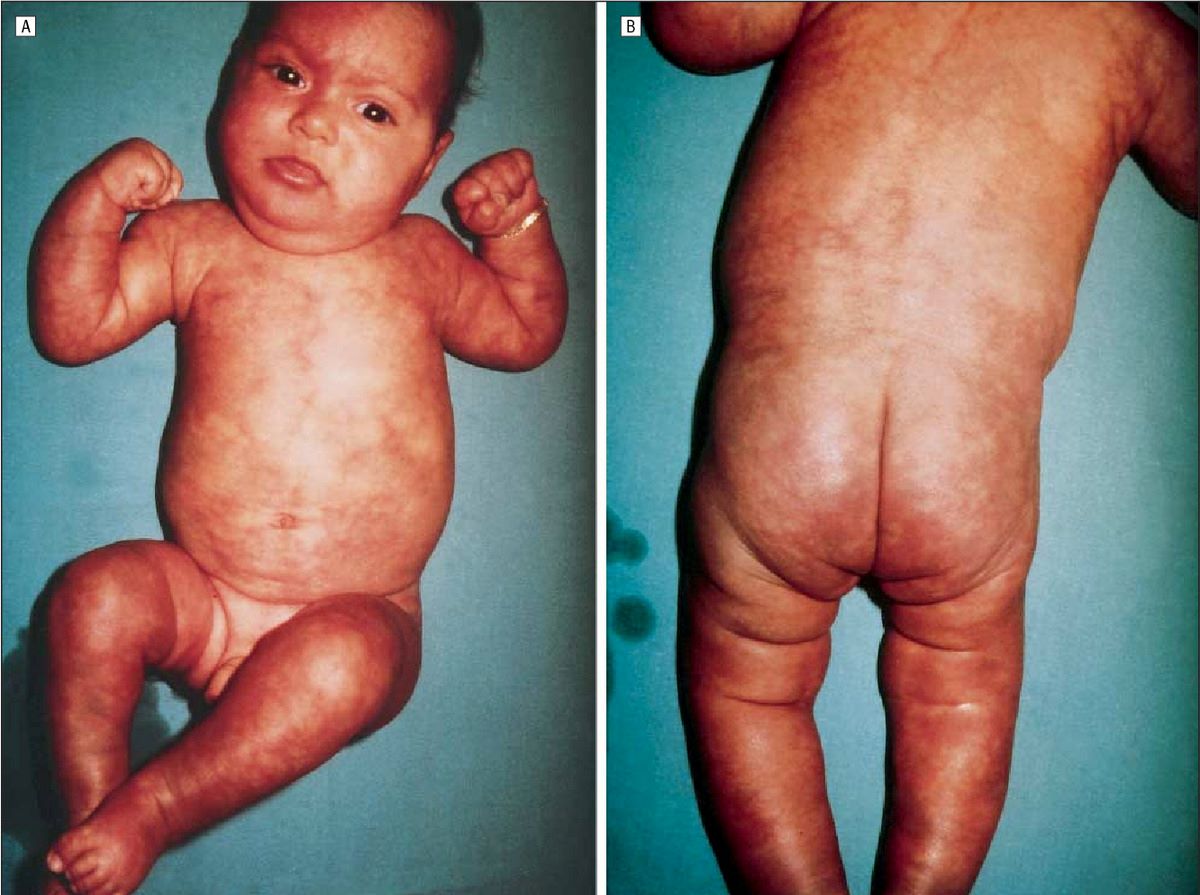
Phacomatosis Pigmentovascularis might sound like a tongue twister, but it's a rare skin condition that combines both pigmentary and vascular anomalies. Imagine having unique birthmarks that blend different colors and textures on your skin. This condition can affect anyone, regardless of age or gender. Phacomatosis Pigmentovascularis often presents itself at birth or early childhood, making it a lifelong companion. While it might look intimidating, understanding it can help manage its effects better. From its intriguing history to the latest research, we'll uncover 25 fascinating facts about this rare condition. Ready to dive in? Let's get started!
Key Takeaways:
- Phacomatosis Pigmentovascularis is a rare skin condition with both vascular and pigmentary anomalies, leading to unique birthmarks. It can affect different body parts and may be linked to genetic mutations.
- Treatment for Phacomatosis Pigmentovascularis focuses on managing symptoms, such as using laser therapy for vascular birthmarks and topical treatments for pigmentary lesions. Regular follow-up with a dermatologist is crucial for monitoring the condition.
What is Phacomatosis Pigmentovascularis?
Phacomatosis Pigmentovascularis (PPV) is a rare congenital condition characterized by the presence of both vascular and pigmentary skin anomalies. It often presents at birth or early childhood and can affect various parts of the body. Here are some intriguing facts about this unique condition.
-
PPV is a combination of two types of skin lesions: vascular (blood vessel-related) and pigmentary (color-related).
-
The term "phacomatosis" comes from the Greek word "phakos," meaning "birthmark."
-
There are five main types of PPV, each with different combinations of skin anomalies.
-
Type I PPV features nevus flammeus (port-wine stain) and epidermal nevus.
-
Type II PPV includes nevus flammeus and dermal melanocytosis (blue-gray spots).
-
Type III PPV combines nevus flammeus with nevus spilus (speckled lentiginous nevus).
-
Type IV PPV involves nevus flammeus and nevus anemicus (pale patches).
-
Type V PPV, the rarest form, includes nevus flammeus and cutis marmorata telangiectatica congenita (marbled skin appearance).
Causes and Genetics of PPV
Understanding the causes and genetic factors behind PPV can help in diagnosing and managing the condition. Here are some key points about its origins.
-
The exact cause of PPV is unknown, but it is believed to result from genetic mosaicism.
-
Genetic mosaicism means that some cells in the body have different genetic makeup than others.
-
PPV is not typically inherited but occurs sporadically.
-
Mutations in genes related to skin pigmentation and blood vessel formation may play a role.
-
Some cases of PPV have been linked to mutations in the GNAQ and GNA11 genes.
-
Genetic testing can sometimes help identify the specific mutations involved.
Symptoms and Diagnosis of PPV
Recognizing the symptoms and understanding the diagnostic process is crucial for managing PPV effectively. Here are some important facts about its symptoms and diagnosis.
-
The most common symptom of PPV is the presence of birthmarks with both vascular and pigmentary components.
-
These birthmarks can vary in size, shape, and color.
-
PPV can affect any part of the body, including the face, trunk, and limbs.
-
In some cases, PPV may be associated with other health issues, such as neurological or ocular abnormalities.
-
Diagnosis of PPV is primarily based on clinical examination and the appearance of skin lesions.
-
Dermatologists may use dermoscopy to examine the skin more closely.
-
Imaging studies, such as MRI or ultrasound, can help assess the extent of vascular involvement.
Treatment and Management of PPV
Managing PPV often involves a multidisciplinary approach to address the various symptoms and complications. Here are some key points about treatment and management.
-
There is no cure for PPV, but treatments can help manage symptoms.
-
Laser therapy is commonly used to treat vascular birthmarks, such as port-wine stains.
-
Topical treatments, like corticosteroids, may be used for pigmentary lesions.
-
Regular follow-up with a dermatologist is essential to monitor the condition and address any complications.
Final Thoughts on Phacomatosis Pigmentovascularis
Phacomatosis Pigmentovascularis is a rare condition that combines skin pigmentation and vascular abnormalities. Understanding this disorder helps in early diagnosis and better management. While it’s not fully understood, ongoing research aims to uncover more about its causes and treatments.
Patients with this condition often face unique challenges, but awareness and medical advancements offer hope. If you or someone you know shows symptoms, consulting a healthcare professional is crucial.
Staying informed and supporting research can make a significant difference. Knowledge empowers us to handle rare conditions like Phacomatosis Pigmentovascularis more effectively.
Thanks for joining us on this journey to learn about this rare disorder. Stay curious and keep exploring the fascinating world of medical science.
Frequently Asked Questions
Was this page helpful?
Our commitment to delivering trustworthy and engaging content is at the heart of what we do. Each fact on our site is contributed by real users like you, bringing a wealth of diverse insights and information. To ensure the highest standards of accuracy and reliability, our dedicated editors meticulously review each submission. This process guarantees that the facts we share are not only fascinating but also credible. Trust in our commitment to quality and authenticity as you explore and learn with us.
